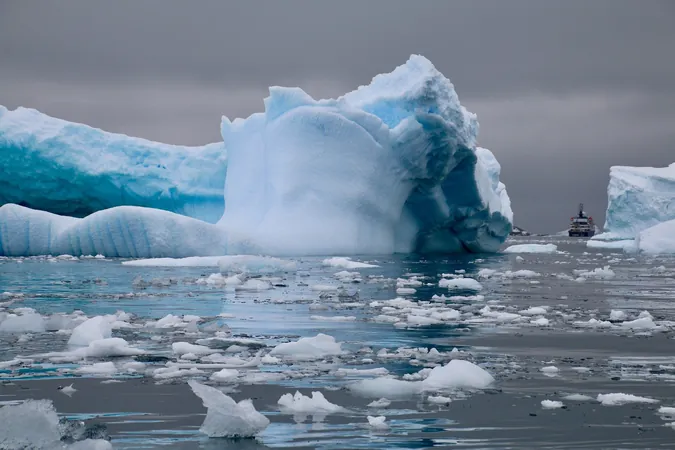
Melting Iceberg Mysteries Revealed: Why They Capsize and What It Means for Our Planet
2025-09-15
Author: John Tan
As temperatures in our oceans rise, the fate of icebergs hangs in the balance. New research sheds light on how climate change accelerates glacier melting and increases the risks of iceberg capsize, posing significant challenges for our understanding of their movements and impacts.
Leif Ristroph, an associate professor at NYU's Courant Institute and senior author of the groundbreaking study published in *Physical Review Fluids*, states, "Our research unveils essential knowledge about ice physics, a crucial element in assessing the health of our planet and refining climate models and weather forecasts." This exploration is essential as it reveals that the melting ice acts as the 'canary in the coal mine'—an early warning signal of global warming and ecological imbalance.
The research team, which includes notable scientists from NYU and the Flatiron Institute, conducted innovative experiments to replicate the behavior of floating icebergs in a controlled environment. They crafted cylindrical ice blocks, free from air bubbles that could skew results, and submerged them in a tank filled with room-temperature water, an effective medium to study ice melt.
Cameras meticulously recorded the icebergs as they melted and capsized. Astonishingly, the researchers discovered that the melting process reshapes the ice, leading to sudden rotations and capsizing. During the half-hour melt duration, they observed around 10 to 15 capsize events.
Perhaps the most surprising finding was how the ice transformed into a shape resembling a pentagon. This unexpected result prompted the team to develop a mathematical model to explain the connection between melting, shape change, and capsize.
Their model accounted for the interplay of gravitational and buoyancy forces acting on the iceberg and how its movement in water further influenced its stability. Ristroph elaborates, "We discovered that melting primarily occurs on the submerged surfaces, leaving the above-water tip largely unaffected. This creates top-heavy ice, resulting in a loss of stability and a tendency to rotate." Remarkably, when they capsize, icebergs tend to rotate through a specific angle equating to one-fifth of a full turn, which intriguingly correlates with the eventual five-sided shape.
This research isn't just about icebergs—it's a crucial piece of understanding how climate change might transform our planet’s aquatic landscapes. With rising temperatures leading to more ice melting, gaining insights into these dynamics can inform future climate models and predictions.



 Brasil (PT)
Brasil (PT)
 Canada (EN)
Canada (EN)
 Chile (ES)
Chile (ES)
 Česko (CS)
Česko (CS)
 대한민국 (KO)
대한민국 (KO)
 España (ES)
España (ES)
 France (FR)
France (FR)
 Hong Kong (EN)
Hong Kong (EN)
 Italia (IT)
Italia (IT)
 日本 (JA)
日本 (JA)
 Magyarország (HU)
Magyarország (HU)
 Norge (NO)
Norge (NO)
 Polska (PL)
Polska (PL)
 Schweiz (DE)
Schweiz (DE)
 Singapore (EN)
Singapore (EN)
 Sverige (SV)
Sverige (SV)
 Suomi (FI)
Suomi (FI)
 Türkiye (TR)
Türkiye (TR)
 الإمارات العربية المتحدة (AR)
الإمارات العربية المتحدة (AR)